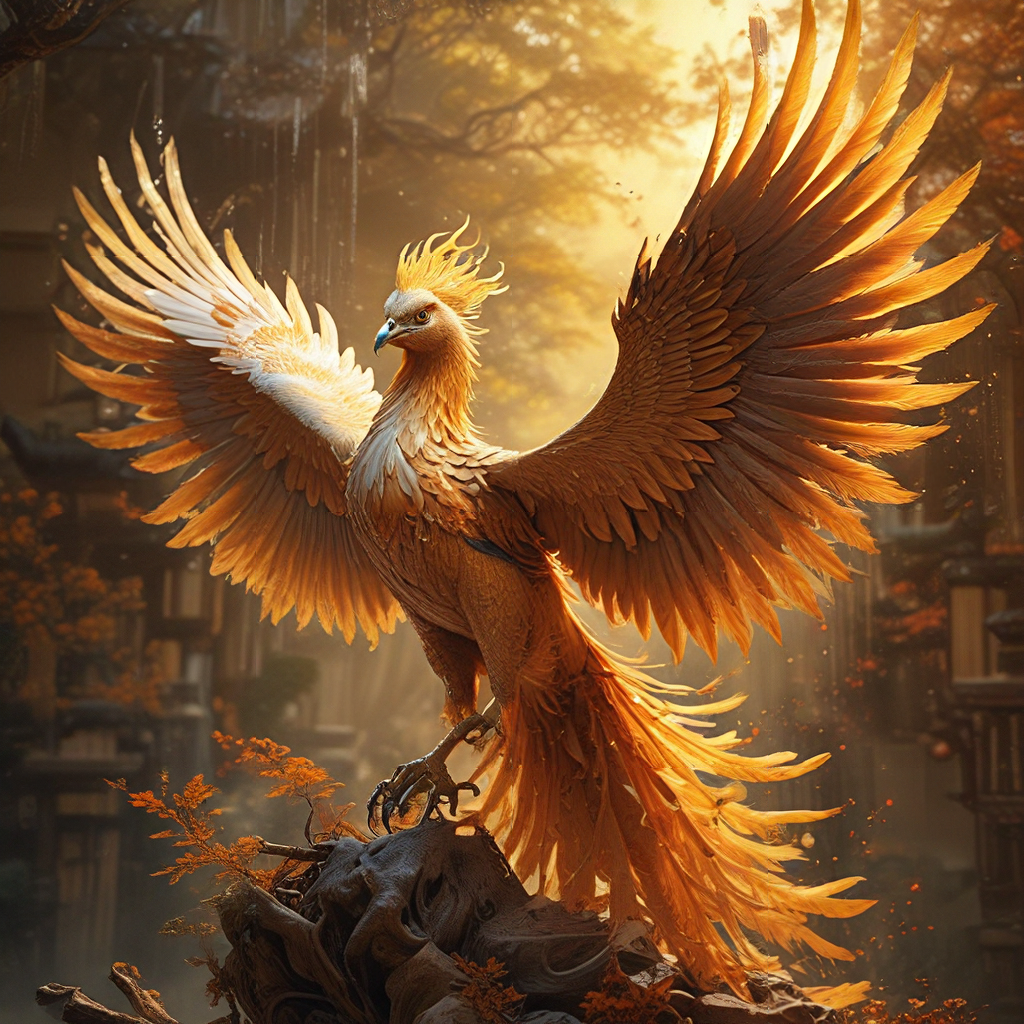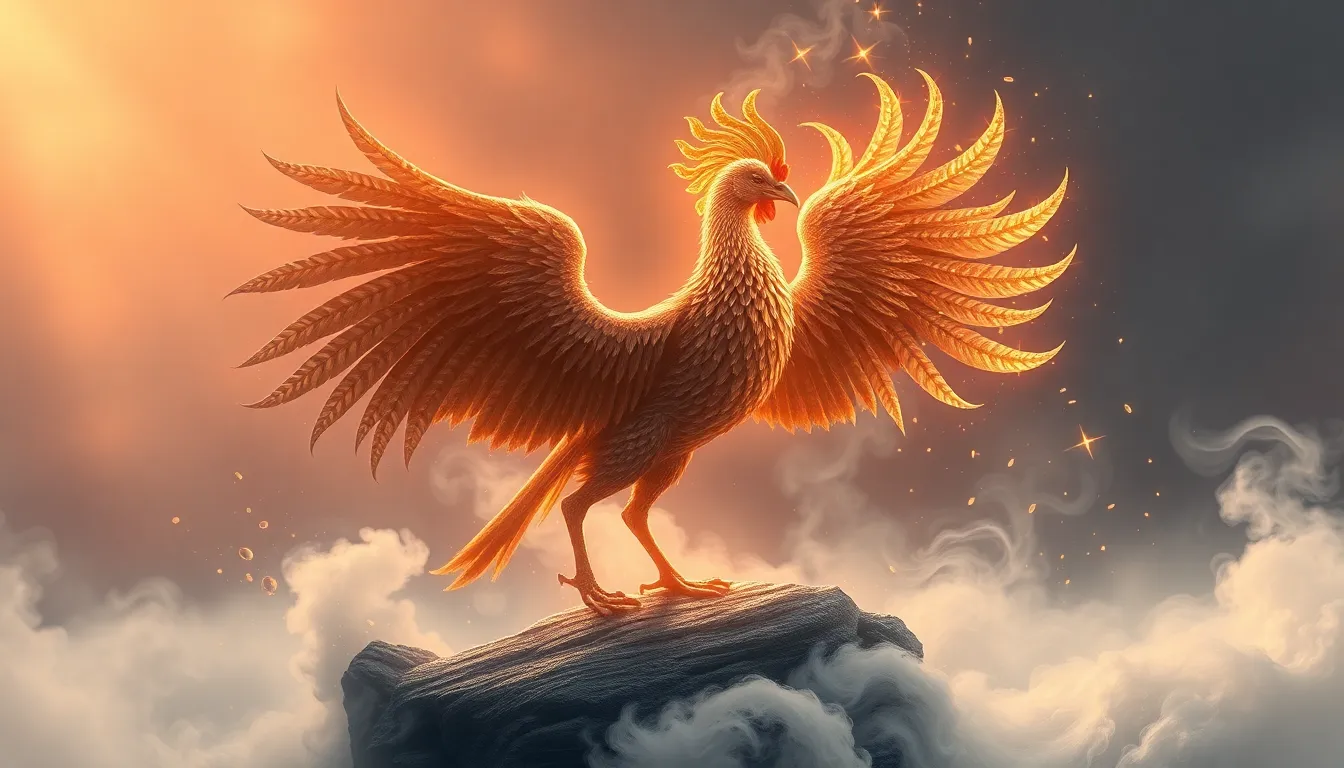The Phoenix in Japanese Mythology: Ho-o, the Sacred Bird of Purity and Harmony
The Ho-o, also known as the Fenghuang in Chinese mythology, is a mythical bird deeply embedded in Japanese folklore and symbolism. It embodies concepts of rebirth, renewal, purity, and harmony – qualities that have resonated with the Japanese people for centuries. Its image graces ancient temples, scrolls, and artwork, and its legend continues to inspire awe and admiration.
The Ho-o: A Symbol of Rebirth and Renewal
At its core, the Ho-o is a symbol of rebirth and renewal. It is believed to rise from its own ashes, representing the cyclical nature of life, death, and resurrection. This aspect makes the Ho-o a powerful metaphor for overcoming adversity, embracing transformation, and finding hope even in the face of challenges. The bird’s ability to regenerate symbolizes resilience, the capacity to rise above the past, and the promise of a brighter future.
Origins and Evolution of the Ho-o Myth
The Ho-o’s origins can be traced back to ancient China, where the Fenghuang was already a revered creature. The myth likely spread to Japan during the early centuries of cultural exchange between the two nations. Over time, the Japanese adapted the legend, incorporating their own beliefs and symbolism into the Ho-o’s portrayal. While the Chinese Fenghuang is often depicted as a female bird, the Japanese Ho-o is seen as a more androgynous entity, symbolizing the harmonious union of masculine and feminine energies.
The Ho-o’s Physical Description: A Fusion of Beauty and Power
The Ho-o is described as a magnificent bird, possessing a striking combination of beauty and power. Its plumage is said to be a dazzling array of colors, with feathers that shimmer and glow, reflecting the brilliance of the sun, moon, and stars. The Ho-o’s beak is often depicted as being long and sharp, while its legs are strong and capable of carrying it great distances. The bird’s eyes are said to possess an ethereal glow, radiating wisdom and insight.
The Ho-o’s Role in Japanese Folklore and Legends
In Japanese folklore, the Ho-o plays a significant role in various legends and tales. It is often portrayed as a messenger of the gods, delivering messages of peace and prosperity. The Ho-o is also believed to be able to foretell the future and to possess magical powers. The bird’s appearance is seen as an auspicious sign, signifying good fortune, harmony, and spiritual enlightenment.
The Ho-o as a Symbol of Imperial Power and Authority
Throughout Japanese history, the Ho-o has been associated with imperial power and authority. The bird was often depicted on the imperial crest and in other symbols of sovereignty. Its presence signified the emperor’s divine right to rule and his role as a protector of the realm. The Ho-o’s association with imperial power reinforced the idea of harmony, justice, and prosperity under the emperor’s reign.
The Ho-o’s Connection to Nature and the Cycles of Life
The Ho-o’s association with the natural world is deep and profound. In Japanese mythology, the bird is seen as a bridge between the spiritual and physical realms. It embodies the harmony and interconnectedness of all living things. Its feathers are said to shimmer with the colors of nature, representing the diversity and beauty of the world. The Ho-o’s flight is often described as being graceful and effortless, symbolizing the natural rhythms of life and the interconnectedness of all things. This connection to nature reinforces the idea of the Ho-o as a symbol of balance, renewal, and the cyclical nature of life.
The Ho-o is said to reside in sacred mountains and forests, where it enjoys the tranquility and purity of nature. Its presence is associated with the forces of nature, such as wind, fire, and water. The bird’s ability to rise from its own ashes represents the natural cycle of growth, decay, and rebirth, reminding us that even in death, there is the promise of new life. The Ho-o’s connection to nature makes it a powerful symbol of resilience and hope, reminding us that even in the face of adversity, life finds a way to renew itself.
The Ho-o as a Guardian Spirit and Protector
In Japanese folklore, the Ho-o is often depicted as a guardian spirit, protecting people and places from harm. Its presence is said to bring peace, prosperity, and good fortune. The Ho-o’s powerful aura and majestic appearance are seen as a deterrent to evil and a symbol of divine protection. This protective role is often associated with the bird’s ability to control the elements, its sharp beak and strong talons symbolizing its ability to defend itself and those it protects.
The Ho-o’s guardianship extends beyond the physical realm. It is also believed to protect people from spiritual harm, guiding them towards enlightenment and a life of virtue. Its presence inspires people to live in harmony with nature and with each other, promoting peace and understanding among all living beings. The Ho-o’s role as a guardian spirit emphasizes its connection to the spiritual realm and its ability to bring about positive change in the world.
The Ho-o’s Significance in Japanese Art and Culture
The Ho-o’s enduring significance is evident in its widespread presence in Japanese art and culture. From ancient scrolls and temples to modern paintings and sculptures, the bird’s image graces a variety of artistic creations. The Ho-o’s captivating beauty, symbolic power, and cultural importance have inspired generations of artists, who have used its image to express their own interpretations of its mythology and meaning.
The Ho-o’s vibrant colors, graceful movements, and symbolic nature make it a popular subject for artistic expression. Its image is often incorporated into traditional Japanese art forms, such as painting, calligraphy, and ceramics. The Ho-o’s presence in these art forms reflects its deep connection to Japanese culture and its ability to inspire beauty and wonder.
The Ho-o’s Influence on Modern Japanese Thought and Identity
The Ho-o’s legacy continues to influence modern Japanese thought and identity. The bird’s symbolism of rebirth, renewal, and harmony resonates with many aspects of Japanese culture, from the emphasis on tradition and continuity to the pursuit of peace and progress. The Ho-o’s ability to overcome adversity and rise from the ashes is seen as a metaphor for the resilience and adaptability of the Japanese people.
The Ho-o’s message of peace and harmony is particularly relevant in today’s world, where conflict and division are prevalent. Its presence in art, literature, and popular culture reminds people of the importance of unity, compassion, and understanding. The Ho-o’s influence on modern Japanese thought and identity reflects its enduring relevance as a symbol of hope and inspiration.
FAQ
Q: What is the difference between the Ho-o and the Phoenix?
The Ho-o and the Phoenix are closely related mythical creatures. While the Phoenix is a Western mythological creature, the Ho-o originated in Chinese mythology. While they both share a common symbolism of rebirth and renewal, the Ho-o is often portrayed as a more androgynous entity, symbolizing the harmonious union of masculine and feminine energies.
Q: What are some other aspects of the Ho-o’s symbolism?
The Ho-o is also associated with other concepts like:
- Virtue: It represents the ideals of a virtuous life, promoting harmony, peace, and righteousness.
- Divine Intervention and Good Fortune: The Ho-o’s appearance is seen as a sign of good fortune, divine favor, and positive change.
- Spiritual Transformation: It represents a journey of personal growth, enlightenment, and transcendence.
Q: What is the significance of the Ho-o’s colors?
The Ho-o’s colorful plumage symbolizes the harmony and balance of the natural world. Each color carries its own meaning and significance, reinforcing the bird’s symbolic power:
- Red: Represents the sun, passion, energy, and strength.
- Yellow: Signifies the earth, harvest, abundance, and prosperity.
- Blue: Connected to the sky, wisdom, peace, and tranquility.
- White: Symbolizes purity, truth, and spiritual enlightenment.
- Black: Represents the night, mystery, and the unknown.
Q: How is the Ho-o depicted in modern Japanese popular culture?
The Ho-o continues to appear in modern Japanese media, often as a symbol of hope, resilience, and transformation. It can be seen in anime, manga, video games, and movies, adding a layer of myth and symbolism to these works.



